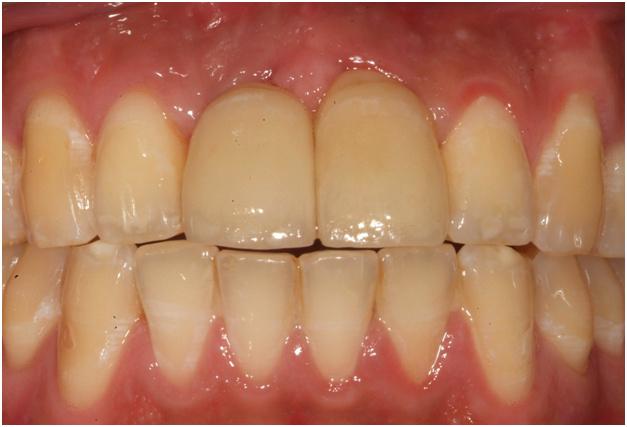-
0
Patient Assessment
- 0.1 Patient Demand
- 0.2 Anatomical location
-
0.3
Patient History
- 2.1 General patient history
- 2.2 Local history
-
0.4
Risk Assessment
- 3.1 Risk Assessment Overview
- 3.2 Age
- 3.3 Patient Compliance
- 3.4 Smoking
- 3.5 Drug Abuse
- 3.6 Recreational Drug and Alcohol Abuse
- 3.7 Condition of Natural Teeth
- 3.8 Parafunctions
- 3.9 Diabetes
- 3.10 Anticoagulants
- 3.11 Osteoporosis
- 3.12 Bisphosphonates
- 3.13 MRONJ
- 3.14 Steroids
- 3.15 Radiotherapy
- 3.16 Risk factors
-
1
Diagnostics
-
2
Treatment Options
-
2.1
Treatment planning
- 0.1 Non-implant based treatment options
- 0.2 Treatment planning conventional, model based, non-guided, semi-guided
- 0.3 Digital treatment planning
- 0.4 NobelClinician and digital workflow
- 0.5 Implant position considerations overview
- 0.6 Soft tissue condition and morphology
- 0.7 Site development, soft tissue management
- 0.8 Hard tissue and bone quality
- 0.9 Site development, hard tissue management
- 0.10 Time to function
- 0.11 Submerged vs non-submerged
- 0.12 Healed or fresh extraction socket
- 0.13 Screw-retained vs. cement-retained
- 0.14 Angulated Screw Channel system (ASC)
- 2.2 Treatment options esthetic zone
- 2.3 Treatment options posterior zone
- 2.4 Comprehensive treatment concepts
-
2.1
Treatment planning
-
3
Treatment Procedures
-
3.1
Treatment procedures general considerations
- 0.1 Anesthesia
- 0.2 peri-operative care
- 0.3 Flap- or flapless
- 0.4 Non-guided protocol
- 0.5 Semi-guided protocol
- 0.6 Guided protocol overview
- 0.7 Guided protocol NobelGuide
- 0.8 Parallel implant placement considerations
- 0.9 Tapered implant placement considerations
- 0.10 3D implant position
- 0.11 Implant insertion torque
- 0.12 Intra-operative complications
- 0.13 Impression procedures, digital impressions, intraoral scanning
- 3.2 Treatment procedures esthetic zone surgical
- 3.3 Treatment procedures esthetic zone prosthetic
- 3.4 Treatment procedures posterior zone surgical
- 3.5 Treatment procedures posterior zone prosthetic
-
3.1
Treatment procedures general considerations
-
4
Aftercare
Patient expectations
Key points
- The most important goal of treatment is to meet or exceed patient expectations.
- In case of unmet expectations patients will be more understanding of the circumstances if the dentist has shown true caring for the patient.
Continuous dialogue with patient
Addressing the patient’s chief complaints satisfactorily and meeting patient expectations lies at the core of all dental therapy. The best way to ensure that patient expectations are met or exceeded is by thoughtful listening during the diagnosis and treatment planning phases and then by regular reference to those initial goals during treatment. Especially, at the evaluation visit after completing the prosthetic treatment attention must be paid to the acquired end result and possible (minor) deviations from ideal.
Managing unmet patient expectations
Occasionally, despite the best of intentions and excellent technical treatment, a patient’s expectations will not be met. Especially, tooth replacement of one single central incisor in the upper jaw can be quite a challenge to achieve an esthetic optimal and harmonious end result. Discrepancies in soft tissues are mostly harder to manage than the restoration itself. Acknowledging the patient’s disappointment in a sensitive manner and working with the patient to improve the treatment outcomes is the best way to address the situation while preserving the dentist-patient relationship. Patients will be more understanding of the circumstances surrounding their disappointment if the dentist has shown true caring for the patient.
If the unmet expectations are of an aesthetic nature, the subjective response of the patient and his/her family and friends must be considered. Sometimes a patient can point to a specific issue that, if rectified, will address the concerns. However, sometimes a patient is not satisfied but cannot pinpoint the reason for their unease. These situations are particularly difficult for both patient and clinician.

Figure 1: Patient with implant-supported restorations in position 11 (#8 UNIV) and 21 (#9 UNIV).
End result did not meet patient’s expectation because of disharmony in labial soft tissues.
